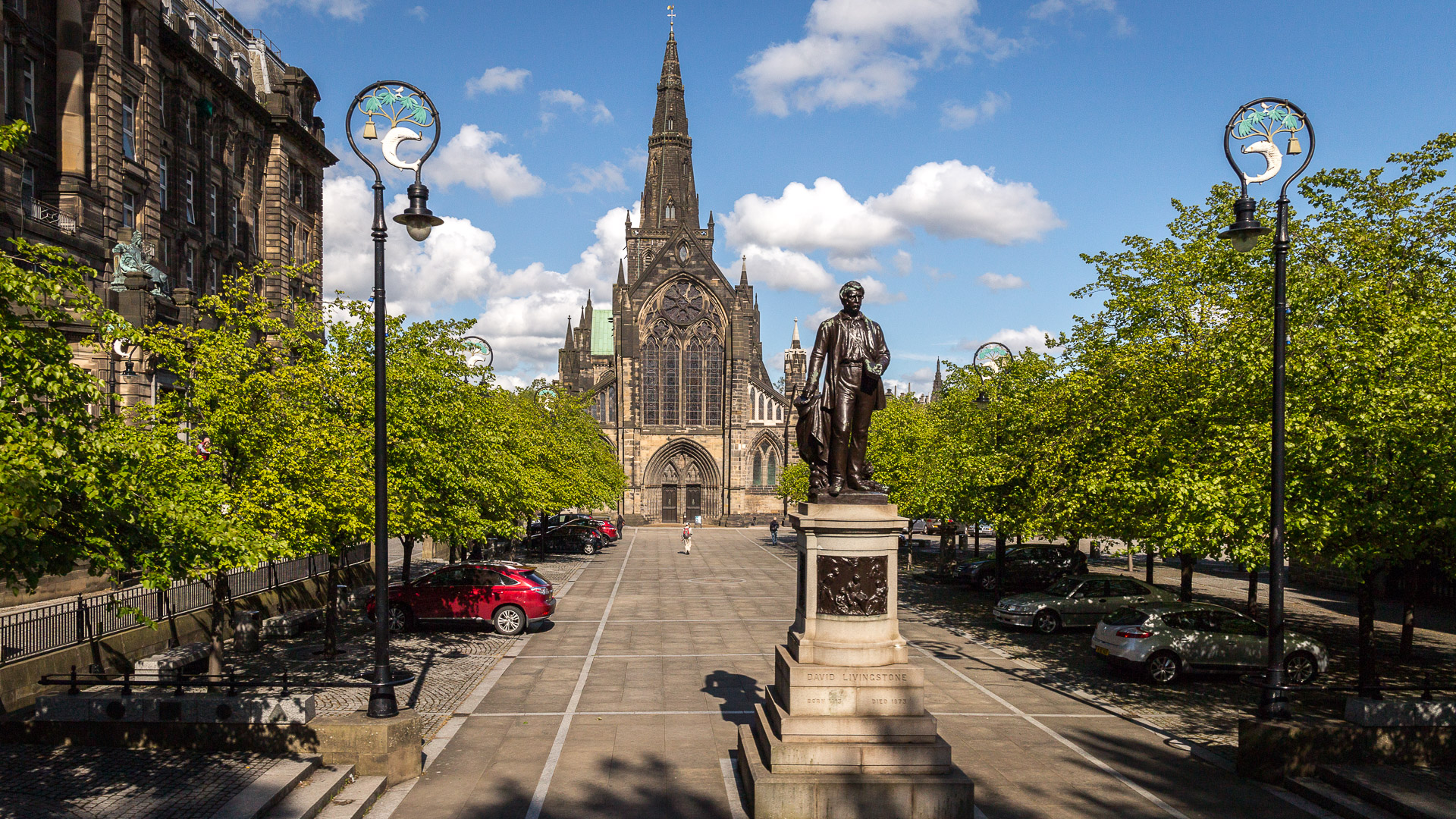Glasgow Cathedral is one of the few medieval cathedrals in Scotland that has not been destroyed. That’s what makes it so worth seeing.

St Mungo built a chapel on this site by the small river Molindar around 600 AD and worked here from then on. After his death, people built a cathedral over his grave. And a city soon grew up around it: Glasgow.
The history of the city and that of the cathedral are inextricably linked. It was consecrated in 1136 – King David I gave himself the honour of being present. Since then, it has been both a spiritual and secular centre. The nearby Glasgow University also had its beginnings in the cathedral.
Only two Gothic cathedrals have survived the centuries. St Magnus on the Orkneys and Glasgow Cathedral. St Andrew’s Cathedral, for example, was less fortunate – like many others, it did not survive the Reformation, during which Catholic buildings were looted or destroyed throughout the country. Glasgow Cathedral is one of the few examples from this period and is therefore well worth a visit.
The church stands in the middle of Glasgow, 400 metres from the M8 motorway, surrounded by old buildings and skyscrapers. And yet the cathedral seems to be surrounded by space and dominated by greenery.
Visitors enter the nave of the building through the side door. Inside, the typical Gothic gloom awaits, broken by colourful light from the ornate windows.
Certainly the most beautiful part of the cathedral is the chancel, which visitors reach through a stone choir room.
The chancel feels warmer than the nave and is certainly the most beautiful part of the cathedral.
A glance upwards reveals an ornate wooden vault with numerous coats of arms.
If you go all the way to the end, you will come across the altar, which stands on a red carpet.
There are interesting details in Glasgow Cathedral. For example, the Law Monument from the 17th century, which commemorates Archbishop James Law.
Or the ship’s bell from HMS Glasgow, which was donated here in 1997 (the ship was built in 1936 and scrapped in 1958).
The view into the vestry with its beautiful floor and elaborate wooden furniture is also beautiful.
The crypt of the cathedral, where St Mungo’s tomb is located, is also worth a visit.
Glasgow Cathedral is definitely one of the top sights in Scotland’s largest city.
Knowledge: How the university grew out of Glasgow Cathedral
Bishop William Turnbull studied at Scotland’s first university in St Andrews. After a career at the King’s court, he became Bishop of Glasgow Cathedral. Here he was already teaching in the district.
However, he could not found a university without papal permission. He obtained a decree from the reigning Pope Nicholas V and founded the University of Glasgow in 1451, making it the second oldest university in Scotland.
Incidentally, Glasgow Cathedral is often also called St Mungo’s Cathedral or Kentigern’s Cathedral. Kentigern is simply another name for St Mungo’s.
Tip: Cross the Bridge of Sighs to the dead
Directly from the cathedral, a path leads across an old bridge over a road. This bridge is called the Bridge of Sighs and it soon becomes clear why: it ends at the Glasgow Necropolis, the city’s large cemetery.
The Necropolis is home to marvellous monuments, among which the living also walk. It is absolutely worth a visit. However, you should pay attention to the closing times.
If there is still time, the St Mungo Museum of Religious Life and Art on Castle Street is another way to pass the time. Here you will find religious artefacts, not only from Christianity.
How to get there:
By car: The cathedral is located on Castle St (A8) and has a large car park directly in front of the main entrance.
By public transport: Buses 19 and 38 run from Martha Street near George Square to Glebe Street.
City Sightseeing Bus: Alternatively, you can take the hop-on hop-off bus from Citysightseeing. It stops directly at the cathedral. Tickets can be purchased from Getyourguide (advert).